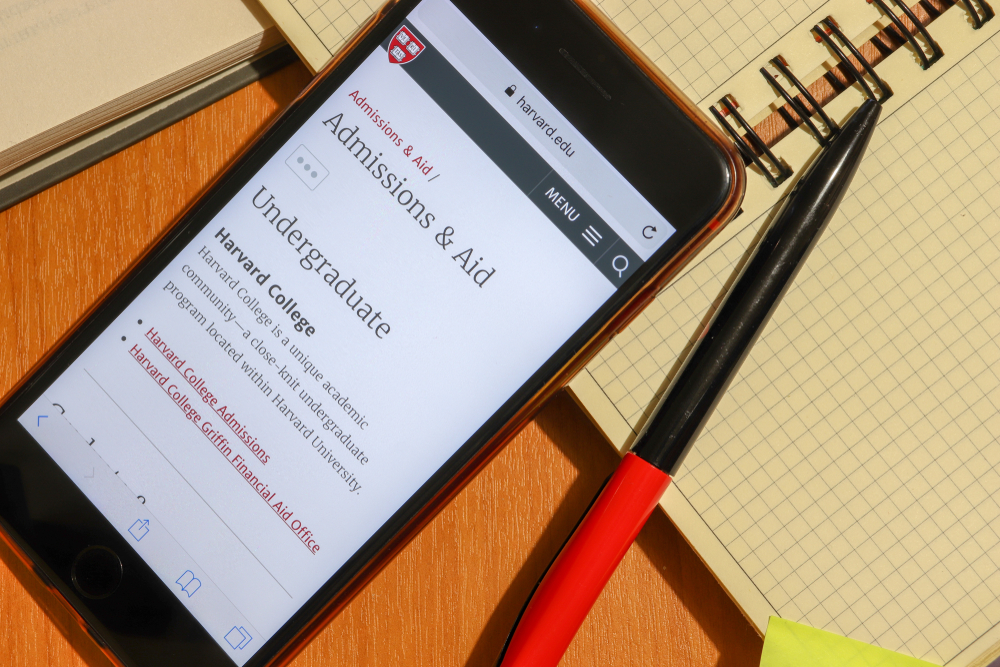Denmark Pays Student $1,000 Monthly to Attend University, With No Tution Fees

Imagine a world where going to university doesn’t mean drowning in debt, but actually earning a paycheck. Where young adults are paid nearly $1,000 a month to study, with zero tuition fees, and no late-night shifts just to afford rent or ramen noodles.
That world isn’t a utopian fantasy, it’s Denmark.
While students in countries like the U.S. graduate with an average of $30,000 in debt, their Danish counterparts walk away with degrees, not loan statements. It’s a radical model that flips the global narrative of higher education on its head: education not as a burden, but as an investment by the state, in its people.
But behind this seemingly perfect system lies a complex balancing act. Free education has brought both opportunity and challenge, generosity and reform, freedom and frustration. And in Denmark, a new kind of student has emerged one who lingers in academia a little too long, raising big questions about purpose, productivity, and the future of public education.
What happens when you remove financial pressure from learning? Denmark is finding out.
Why Denmark Chose This Path Brains Over Resources
Denmark’s decision to pay students and eliminate tuition fees isn’t a recent political whim—it’s a strategic choice rooted in the country’s geography, economy, and vision for the future. Unlike nations blessed with abundant natural resources, Denmark is a small, export-oriented country with limited raw materials. What it does have is human capital—and it’s treated as the nation’s most vital resource.
“It’s a small open economy [that] has virtually no raw materials here apart from brains,” says Philipp Schröder, professor of economics at Aarhus University. That insight became the foundation of a long-standing national policy: prioritize education as the engine of economic growth and social mobility.

Since the 1970s, the Danish government has maintained and expanded the SU system short for Statens Uddannelsesstøtte as a cornerstone of its welfare model. The idea is simple but powerful: education should be accessible to all, regardless of family income. This approach makes it easier for students from less privileged backgrounds to pursue higher education without being forced to take on jobs or debt that might derail their academic path.
Over time, this model has fostered a society where students can focus on learning instead of survival. While inequalities in access still persist studies show children from more educated or wealthier families are still more likely to attend university the SU system has undoubtedly lowered the barrier to entry.
More than a welfare policy, Denmark’s approach reflects a national philosophy: education is not a commodity to be bought, but a public good to be cultivated. By investing in education, Denmark invests in its future workforce, its innovation capacity, and its social stability. It’s a system that values long-term societal resilience over short-term individual competition.
The Price of Freedom Taxes, Trade-Offs, and Tensions

Free tuition and monthly stipends may sound like a dream, but in Denmark, they come with a clear price tag paid not by students, but by taxpayers. The country’s generous higher education model is sustained through one of the highest tax burdens in the world. In some cases, Danes hand over more than 50% of their income to the government through a progressive tax system that grows with earnings.
To outsiders, that may seem extreme. But within Denmark, it’s widely accepted. Polling consistently shows that most Danes are not only willing to pay high taxes they’re proud of what those taxes support: universal healthcare, public pensions, and debt-free education.
As physics student Tobias Washeim explains, “You might pay less taxes and you get a higher income in the US, but I don’t really mind paying [those] high taxes.” For him and many others, the trade-off is clear: financial security during formative years, and the ability to pursue education without the anxiety of crushing debt.
Yet, this freedom has also created new tensions. Critics argue that removing financial pressure has, in some cases, also removed motivation. Some students take longer than expected to graduate, while others drift between programs without a clear goal. A few even take advantage of the system, coasting through years of academia with little urgency.
It’s a debate that divides generations. Older Danes—many already in the workforce question whether this level of freedom delays young people from “growing up.” Meanwhile, students argue that the freedom to explore, travel, and take time is what allows them to develop not just as professionals, but as people.
“Eternity Students” and the Slippery Side of Free Education

In a system where students are paid to study and face no tuition costs, a new cultural archetype has emerged in Denmark: the evighedsstuderende or “eternity student.” These are students who linger in the university system well beyond the standard timeframe, often switching programs, taking extended breaks, or engaging in part-time coursework while continuing to receive government stipends.
For some, this academic freedom is liberating. It allows time to travel, reflect, explore different fields, or gain broader life experience. There’s even a term for this: fjumreår, or “the year of goofing around,” where students slow their pace to pursue personal growth or leisure all while still drawing public funding.
But critics argue that when education becomes too flexible and risk-free, motivation can erode. Without the urgency of tuition fees or looming debt, some students delay graduation indefinitely, creating bottlenecks in the university system and pushing up public spending. The average student now takes 6.1 years to complete a five-year degree a delay that costs the state both time and money.
Daniel Borup Jakobsen, a recent graduate and now a tech company executive, describes evighedsstuderende as “a person who never finishes his studies but continuously keeps changing study program year after year.” While not the norm, this group is visible enough to raise serious policy questions.
The Danish government has tried to curb the trend. A 2015 amendment to the Study Progress Reform gave universities more authority to fast-track students through their degrees and cut funding for institutions that fail to meet progress benchmarks. But the issue persists, illustrating a difficult truth: even the most well-meaning systems can create space for inefficiency if accountability isn’t built in.
Yet many students reject the notion that taking longer to graduate equals laziness. They argue that time spent exploring, interning, or managing personal challenges often leads to deeper growth both academically and professionally. For them, education isn’t a race; it’s a process.
The Struggle Between Growth and Efficiency

As the costs of prolonged enrollment began to strain Denmark’s education budget, the government introduced a major policy shift: the 2015 Study Progress Reform. Its purpose was clear encourage students to finish their degrees on time and reduce inefficiencies in the system. Under the new rules, universities were given more power to automatically enroll students in required courses and ensure consistent progress. Schools that failed to meet graduation benchmarks risked losing government funding.
Officials estimated that accelerating graduation timelines could save the state around $266 million and bring graduates into the workforce sooner generating more tax revenue and relieving pressure on public resources. From a purely economic standpoint, the logic made sense. But for many students and educators, the reform represented a fundamental threat to the soul of higher education.
Tens of thousands of students protested in what became the country’s largest demonstrations since the 1960s. Their message was blunt: education should not be reduced to a conveyor belt. Accelerating degrees, they argued, risks compromising depth, critical thinking, and meaningful learning experiences like internships or research. Yasmin Davali, head of Denmark’s National Union of Students, criticized the shift: “Instead of having a focus on getting the best graduates, you have a focus on how do you make them the fastest.”
Universities, too, voiced concern. Faculty feared that pressure to meet graduation quotas could turn institutions into “sausage factories,” churning out credentials instead of cultivating thoughtful, capable individuals. Lauritz Holm-Nielsen, former rector of Aarhus University, pointed out the tension clearly: speeding up education might help the economy in the short term, but could undercut the long-term value of higher learning.
Some students, unwilling to surrender their academic freedom, found ways to resist quietly. One common tactic was calling in sick to exams a legal loophole that allows students to delay progress tracking. Universities saw a noticeable uptick in such postponements after the reforms took effect.
What Can (and Can’t) Be Imported

Denmark’s model of tuition-free education and generous student stipends has drawn international attention, particularly from countries where college costs often feel like a financial trap. For many, the idea that students are paid to study seems almost unimaginable a sharp contrast to systems like the United States, where student debt has surpassed $1.7 trillion and affordability often determines access.
But while Denmark’s approach offers inspiration, it isn’t a blueprint that can be copied wholesale. The country’s model is deeply tied to its cultural values, high-trust governance, and comprehensive welfare infrastructure. Denmark’s relatively small population, strong tax compliance, and political consensus on social investment create conditions that allow such policies to function without collapse.
Countries with larger populations or weaker public institutions may struggle to replicate the same results. Implementing free education without the accompanying fiscal structure—like progressive taxation and accountability mechanisms could lead to unsustainable deficits or uneven outcomes.
That said, there are core ideas from Denmark’s system that can be adapted. The belief that education is a public good, not a private luxury, is a powerful shift in perspective. So is the idea of reducing economic barriers to higher education not necessarily by copying the $1,000 stipend, but by designing more equitable financial support systems.
Denmark also offers a cautionary tale. When public support is too loosely structured, unintended consequences can arise like the rise of “eternity students.” And when efficiency becomes the primary reform goal, educational depth can suffer.
A Mirror to Our Priorities
Denmark’s education model is more than a policy it’s a reflection of a national mindset. It says that knowledge is worth investing in, that students deserve support instead of debt, and that access to education should not be determined by the weight of your wallet. But it also shows that even the most generous systems need balance: between freedom and responsibility, growth and structure, curiosity and purpose.
The global conversation around education often centers on cost. But the deeper question is value not just economic value, but human value. What kind of people do we want to shape through education? Are we building graduates who can compete in the job market, or citizens who can think critically, act compassionately, and lead meaningful lives?
Efficiency is important but it’s not everything. True education takes time. It involves failure, detours, reinvention. It’s not always linear or fast. And when we reduce it to a checklist or a deadline, we risk losing the very thing that makes it powerful: its ability to shape not just what we do, but who we are.
Denmark’s story is not perfect. But it offers something the world needs more of a reminder that education is not just a means to an end. It is, in itself, a vision of the kind of society we want to create.
Loading...

